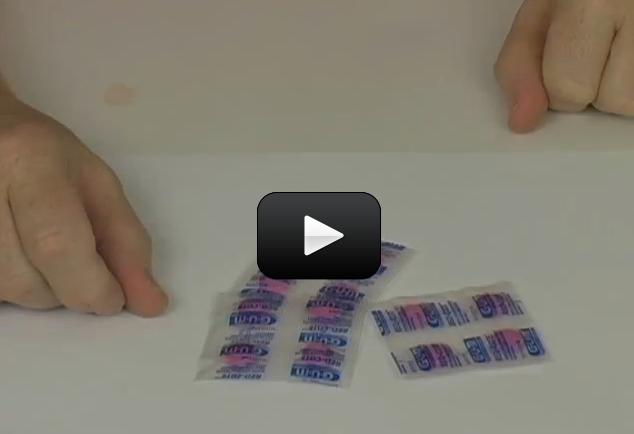The buildup of things like food and bacteria where your gums and teeth meet, and also between your teeth, is called plaque. Where plaque lives is also where the bacteria turns the sugar in your mouth into harmful acids that attack your teeth’s enamel and can lead to gum disease. Regular brushing is a great way to remove plaque and keep your mouth healthy.
[am4show have=’p8;p9;p29;p56;p81;p87;’ guest_error=’Guest error message’ user_error=’User error message’ ]
Here’s what you need
- 1 4-pack of red disclosing tablets
- 1 clear plastic cup
- 1 mirror
- 1 red crayon
- water
Download Student Worksheet & Exercises
Here’s what you do
- Disclosing tablets are designed to identify plaque by turning it red. Remove a pill from the packaging and put it in your mouth. Chew it up thoroughly but don’t swallow it. Be very careful not to get any of the dye on clothing or anything else that might stain. The color is very difficult to remove!
- Take the cup full of water and rinse out your mouth very well. Spit the water out into the sink. Check your mouth in the mirror. All of that red is plaque! Draw a picture of your mouth and use the red crayon to note where the plaque is attacking your teeth and gums.
- You should have a total of 4 pills in the package. You can test other members of your family, or if you would prefer, test yourself over a period of a few days after you have had a chance to observe and identify where you should be doing a better job of tooth-brushing.
What’s going on?
When you chew the tablets they start to dissolve and mix with your saliva. This makes a water soluble dye that affixes to the bacteria and other particles in your mouth. The dye is absorbed by the bacteria, so it holds onto it even after your mouth is rinsed. This enables you to identify the unbrushed areas in your mouth.
Have you ever counted your teeth? They started to appear when you were a baby – about 6 months old or so. Kids have 20 deciduous, or baby teeth. These will fall out and the adult teeth grow in to replace them. Adults usually have 32 total teeth.
Exercises
- Why does this experiment work at detecting plaque?
- How can dentists and moms use this to make sure you’re doing a good job brushing?
- What is plaque, and why is it bad for you?
[/am4show]


Nope – it just stays there for a bit while you inspect your teeth for places you really need to brush better!
Hi Aurora its Kaden Kruid I was just wondering what’s in the tablets that makes the dye stick to your teeth?
Yes – all you have to do is ask for them, and most dentists will give you a handful of them. It’s a great way to check your teeth to see how well you brushed!
I did not know dentists gave these.:3
lol this is pretty cool haha 🙂